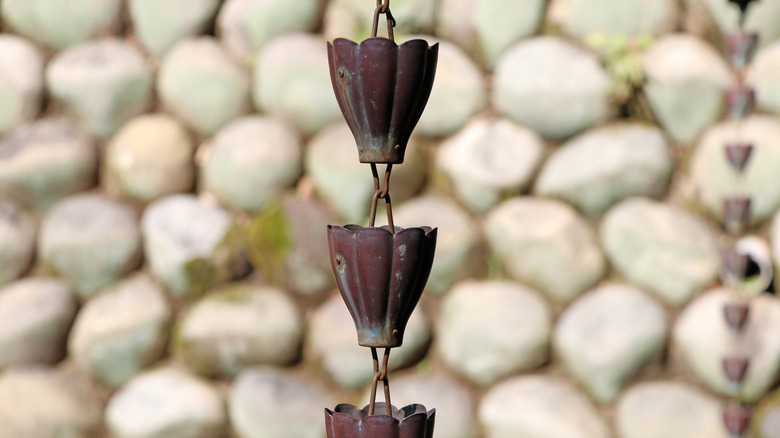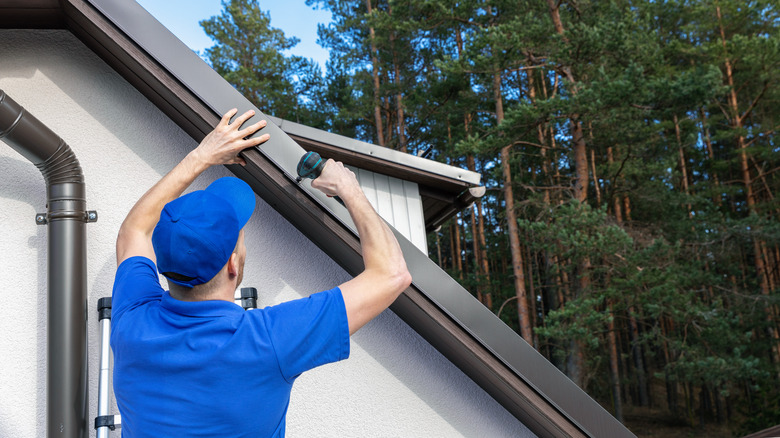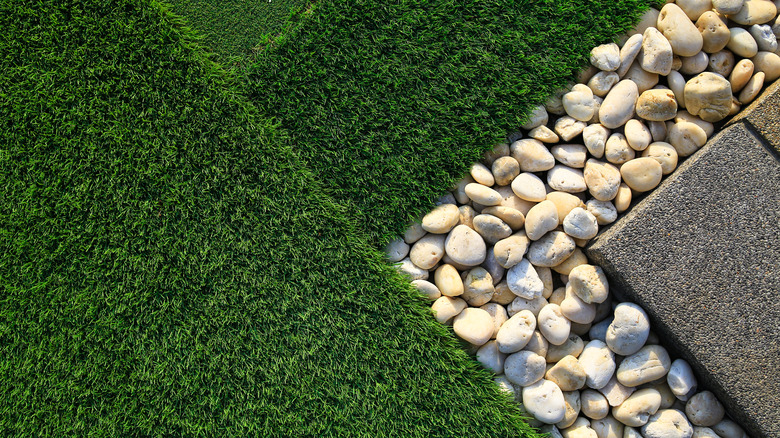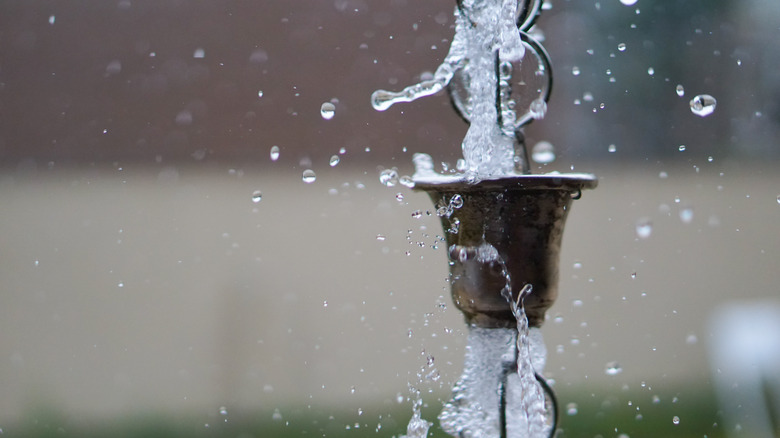3 Ways To Divert Water Away From Your House Without Gutters
Rain gutters are very useful for preventing water damage to your home and preserving its structure. By diverting water away from the foundation and siding, gutters ensure that water doesn't seep into your home and cause problems like a flooded basement or mold. Gutters can help preserve your soil, landscaping, roof, and even sidewalks and patios, explains Rain Gutters Solution.
Sometimes, however, you might need an alternative to a gutter. Perhaps cleaning your gutters is becoming too much of a hassle. Maybe they don't function properly anymore, or you just want an option that has a more pleasant appearance. Regardless of the reason, there are various alternatives out there. According to Blue River Gutters, some methods depend on the architecture of your home, like Spanish-style overhangs, which are designed into a home while it's being built, while others can be simple additions. Here are three ways that you can direct water away from your house without using gutters.
Drip edges
Drip edges are metal sheets that are fixed along the edge of the roof. They are designed to reduce the speed of falling rainwater and direct it away from the house walls. Drip edges protect both the foundations and the walls from absorbing water and getting damaged, says Worst Room. This makes them a good alternative since water can seep behind gutters and rot the wooden boards that they are mounted on, as well as the wooden joists that frame your roof.
You can find drip edges made from copper, aluminum, steel, and various kinds of plastics. The three main options are type C, the standard L-shaped; Type D, which is T-shaped and more effective at keeping water away from the long wooden board on the edge of the roof; and Type F, which is a more extended version that is better suited for retrofit on existing roofs, according to IKO.
Drip paths
If you are looking for a more stylish option, drip paths are paved sections that are built right under the roof to catch the rainwater that drips down. By placing rocks and gravel stategically into the soil, you can divert water away from the foundations of your home. To install, first determine the location at which rainwater runs from your roof and onto the ground. Then, dig a trench around the house and ensure that the materials are installed correctly so that the water flows away from the building, explains wikiHow. Another tip from wikiHow is to add some shrubs or small plants to make the area look more attractive.
According to Backyard Boss, this is a good option because it is easy to DIY, easy to maintain, and the materials are affordable. Something that you need to be wary of is that the slope of the ground shouldn't lead towards your house though, warns Real Estate Info Guide.
Rain chains
Originally from Japan, rain chains are metal cups with holes in the bottom to connect them all, describes Real Estate Info Guide. They take rainwater from the roof and direct it all the way down to storage vessels above or below the ground. They can also direct water into things like a planter, says Home Stratosphere. Rain chains are installed on the corner of the roof. In order to keep a pleasant appearance, it is advised not to have too many rain chains on your home's exterior, so this method is better for smaller roofs, advises Real Estate Info Guide.
Rain chains are available in different designs and materials, making this alternative an aesthetically pleasing choice. However, something to note is that they can be costly, especially if they also require a professional installation. And, they aren't ideal in heavy rains and need to be removed in freezing temperatures.



